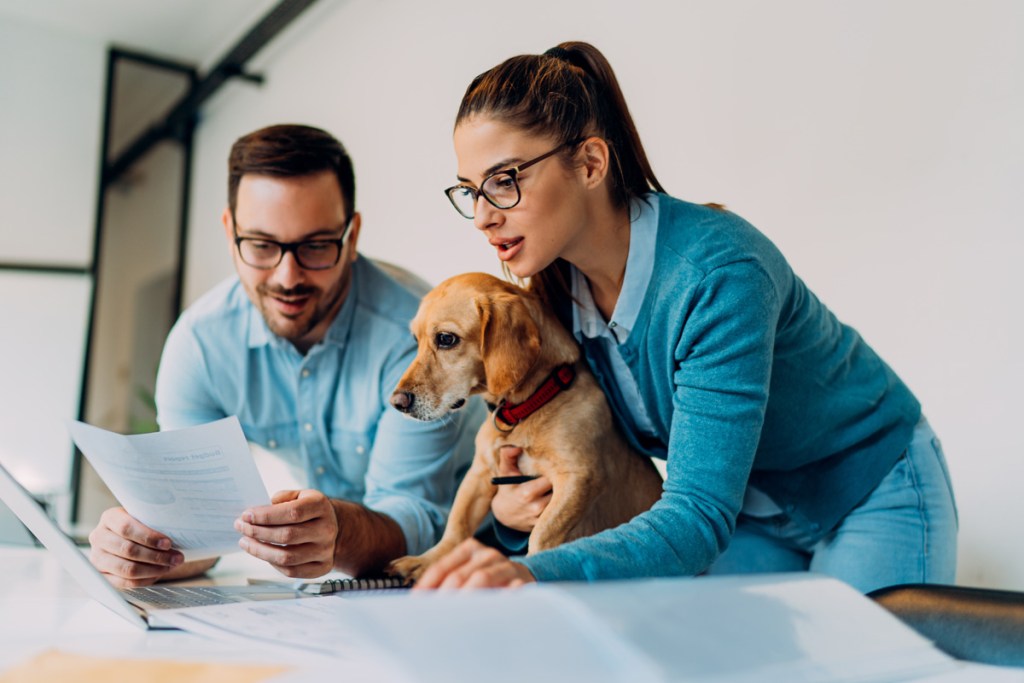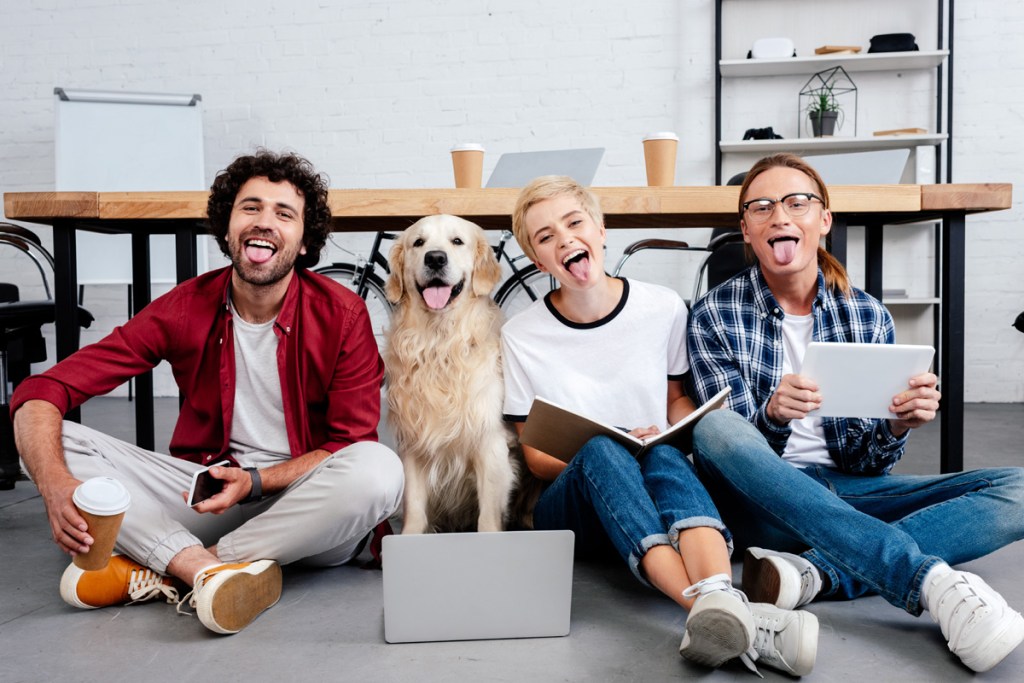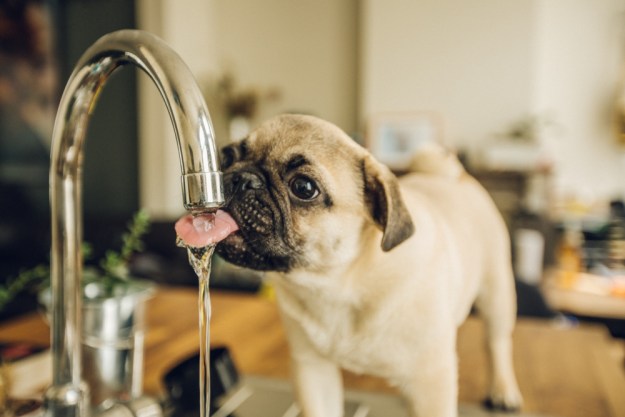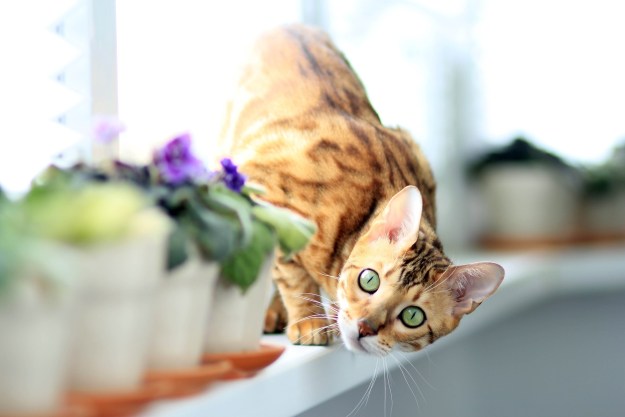A new survey by Purina found that 76% of pet owners working from home during the pandemic reported being happier doing their jobs with pets by their side. Now, as companies consider their return-to-the-office policies, many are looking not only at employees’ safety but also at their mental health. According to Purina, a pet-friendly company for more than 20 years, the benefits of having animals in the workplace include less stress and an overall increase in happiness and productivity. Hiring experts at Purina say that being pet-friendly also has recruitment and retention benefits. The company’s survey revealed that 72% of pet owners working from home would accept a job from a pet-friendly employer over a company that isn’t pet-friendly. Following are some things to consider if you plan on taking your dog to the office.

Will your dog be happy at work?
While taking your dog to work may be exciting for you, it might not be the best choice for your pet. You have to take your dog’s temperament into account when making this decision. If your dog is shy and nervous in new situations and generally doesn’t like meeting new dogs or people, then you should leave her at home. You also don’t want to take an aggressive or poorly trained dog to the office. And an office setting is not a good option for a fearful, skittish dog who growls or barks at people or other pets. These pups would be much happier staying in their own environment. If you’re concerned about separation anxiety when you leave your dog alone, consider hiring a reputable dog walker to help break up her day. Also, provide interactive toys or bones to keep her busy when home alone.
How to prepare your dog for an office environment
- Make sure she is housebroken but keep in mind that accidents will probably happen in the office. This could be marking territory if there are other pets around or because you missed a signal that your dog needed to go outside. Be aware of where your dog is and always clean up any accident immediately. Using an odor eliminator product that discourages marking will cut down on office dogs doing their business inside.
- Brush up on training before bringing your dog to work. At the very least, your dog should understand basic commands like sit, stay, down, and come. Consider getting Canine Good Citizen certification, offered through the American Kennel Club. To earn certification, dogs and owners go through a 10-skill training program. The focus of the program is to teach basic good manners and obedience while strengthening the bond between dogs and owners both at home and away.
- Exercise your dog before heading to the office. A long walk or jog before heading to work will help burn off excess energy. A well-exercised dog will be more likely to lie beside your desk and relax once you get to work.
- Get your dog microchipped and make sure her ID tags are current. There may be opportunities in the workplace for your dog to get loose when you’re not paying attention. For instance, people coming and going from the office. If your dog does get out, you want to be sure you can be reunited quickly.
- Make sure your dog is current on vaccinations. Also, to protect other pets and co-workers, experts at PetMD recommend staying current with your dog’s flea and tick preventive treatment.
What accessories you will need
- Invest in a doggie gate or playpen to keep your dog confined in your work area.
- For safe travel to and from work, use a pet seat belt, a carrier, or a divider to keep your dog from getting into the front of the car.
- Keep a water dish and a supply of poop bags at your desk.
- You’ll also want to leave a doggie bed, treats, and favorite toys or chew bones at the office. It’s considerate to pick your dog’s items off the floor before you leave for the day so that cleaning crews can do their jobs.
- Be sure you have your dog’s outdoor gear and a towel on hand for those rainy days.

Check the office for safety hazards
Before allowing your dog to roam in your office space, check to make sure the area is safe. Pick up any items on the floor, such as paper clips or staples, that could be a choking hazard to dogs. Veterinary experts at PetMD recommend letting your co-workers know that certain foods, often found in an office environment, are toxic to dogs and, if fed to them or dropped on the floor, could cause serious health problems. This includes grapes, raisins, chocolate, and anything with the artificial sweetener xylitol, which includes certain gums and some types of peanut butter.
Being a responsible dog owner will help ensure your company remains pet-friendly. That includes keeping your dog clean and well-groomed. Also, keep in mind that not everybody in the office loves dogs as much as you do. It’s your job to make sure your dog isn’t roaming free, bothering co-workers, or disturbing the workflow. And finally, if your dog is behaving badly in the office, consider others and leave her at home. You can make up for missed time together by taking long walks before and after work.
Editors' Recommendations
- Why do dogs bury bones? The answer is quite interesting
- How many dog breeds are there, really?
- What is littermate syndrome? Why this puppy bond can be a problem
- How to find the right veterinarian for your pet
- Is your cat obese? 5 ways to help them slim down



